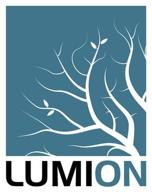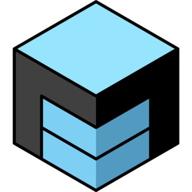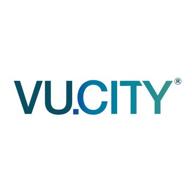Urban Planning and Design
Creating Smart Cities through Urban Planning and Design
Urban planning and design for smart cities is revolutionizing the way cities function, aiming to improve the quality of life for their residents while promoting sustainability and efficiency. By incorporating advanced technologies and innovative strategies, these smart cities are embracing the future of urban living. In this article, we will explore the importance of community-focused planning and design approaches and sustainable strategies in the development of smart cities.
Community-Focused Planning and Design Approaches
One of the key elements in urban planning and design for smart cities is a community-focused approach. Rather than merely focusing on physical infrastructure, planners and designers prioritize the needs and aspirations of the community members. This approach involves engaging with residents, businesses, and stakeholders to understand their preferences, concerns, and vision for the city.
By involving the community in the planning process, urban planners and designers can ensure that the resulting smart city is tailored to its residents. This collaborative approach fosters a sense of ownership and promotes inclusivity, resulting in a city that is more livable, equitable, and responsive to the diverse needs of its population.
Sustainable Strategies for Urban Planning and Design
In the quest to build smart cities, sustainability takes center stage. Sustainable urban planning and design strategies prioritize minimizing environmental impact, conserving resources, and creating resilient and adaptable urban environments.
Integrating renewable energy sources, implementing green building practices, and designing efficient transportation systems are just a few examples of sustainable strategies employed in smart cities. By adopting these strategies, cities can reduce carbon emissions, improve air and water quality, and enhance overall environmental sustainability. Additionally, incorporating green spaces, such as parks and rooftop gardens, promotes biodiversity and enhances the well-being of city residents.
The Role of Technology in Smart Urban Planning and Design
Technology plays a pivotal role in transforming cities into smart urban environments. By harnessing the power of data analytics, artificial intelligence, and the Internet of Things (IoT), planners and designers can make informed decisions, optimize resource allocation, and improve the efficiency of urban services.
Through the implementation of smart sensors and monitoring systems, cities can collect real-time data on various aspects, including traffic flow, energy consumption, and waste management. This wealth of data allows planners to identify patterns, detect bottlenecks, and make data-driven adjustments to enhance the overall functionality of the city.
Moreover, technology enables the creation of interconnected systems, enabling seamless communication and coordination between different city departments. This integration enhances the effectiveness of emergency response systems, traffic management, and public services, making cities safer and more responsive to the needs of their residents.
In conclusion, urban planning and design for smart cities require a holistic approach that considers the community's needs, sustainability, and technological advancements. By embracing community-focused planning and design approaches and implementing sustainable strategies, cities can create vibrant, inclusive, and environmentally conscious urban environments that enhance the quality of life for their residents.


2 Review
Lumion is Architectural Software. Make an image, a video or a 360 panorama, which you can view with VR glasses. Render ultra fast. Make changes all the time. Upload a 3D design (made with Revit, SketchUp Rhino, Archicad or many other 3D modelling programs) and upload your design into Lumion. Lumion includes a large library with beautiful materials and…
Read more about this company
1 Review


1 Review
Modelur is an easy-to-use, yet very powerful parametric urban design software tool, developed to help you quickly create conceptual urban massing. It calculates key urban control parameters on the fly (e.g. FAR or required number of parking lots), delivering important information while design is still evolving. This way it fosters well-informed decision…
Read more about this company

1 Review
The UK's largest and most accurate 3D City digital twin platform that helps people create, refine, share & understand the journey of development to make better planning decisions, faster.

1 Review
The [ uRd ] accelerates your real estate concept development. While producing 2D and 3D models, it calculates investment and planning key figures on the fly. Thanks to the integration of modelling and investment appraisal, your organization will be able to work closer together and develop more concepts in less time. You save costs while increasing your…
Read more about this company

1 Review
SimWalk is a leading pedestrian simulation software for transport, aviation, urban planning and architecture.


1 Review
Get quick answers to complex urban planning and mobility questions. Innovate your planning process with UrbanFootprint.
- Urban planning and design software refers to specialized computer programs and tools designed to assist urban planners, architects, and designers in the creation, analysis, and visualization of urban spaces. These software solutions provide a digital platform for modeling and simulating various aspects of urban environments, including infrastructure, land use, transportation systems, and more.
- Using urban planning and design software offers several benefits. It allows professionals to create detailed 2D and 3D visualizations of urban designs, aiding in effective communication and decision-making. These tools enable the evaluation of different design scenarios, helping identify potential issues and optimize urban plans for better functionality. Additionally, urban planning software can streamline data management, facilitate collaboration among team members, and support the integration of sustainable and smart city concepts.
- When selecting urban planning and design software, consider features such as 3D modeling capabilities, GIS integration, data visualization tools, simulation and analysis functionalities, and compatibility with industry standards. Look for software that allows easy import and export of data, supports collaborative work, and provides intuitive interfaces for efficient workflow. Depending on your specific needs, you may also want to consider software that includes specialized modules for traffic analysis, environmental impact assessment, or urban growth forecasting.
- There are several popular urban planning and design software options available in the market. Some well-known choices include Autodesk's AutoCAD and Revit, ESRI's ArcGIS Urban, Bentley's OpenCities Planner, and Trimble's SketchUp. Each software has its own unique features, strengths, and user communities, so it's important to evaluate them based on your specific requirements and preferences.

